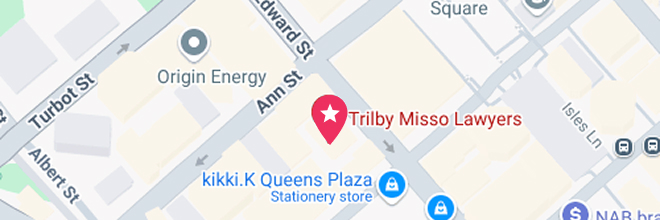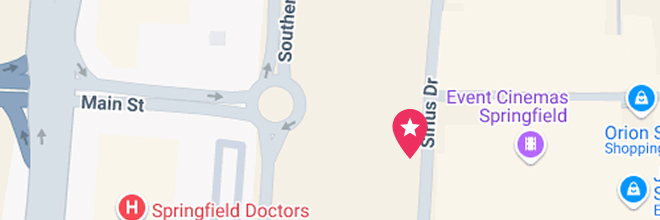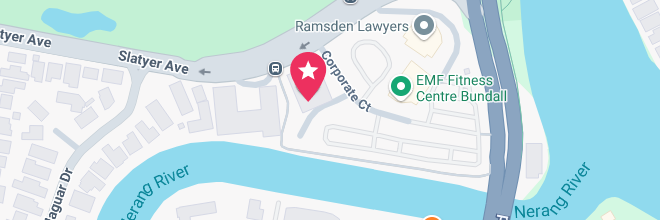Our Brisbane CBD Office
- Suite 400, Level 4/288 Edward St, Brisbane City QLD 4000
- (07) 3910 5470




Negligence in personal injury law is the legal basis for most compensation claims in Queensland. If someone else’s careless behaviour caused you harm — whether in a car crash, at work, or in a public place — the law allows you to hold them accountable. But to succeed, you’ll need to prove that their negligence caused your injury.
In Queensland, proving negligence isn’t just about showing that someone made a mistake. It involves meeting a legal test based on four elements: duty of care, breach of duty, causation, and damages. Each element must be backed by clear evidence — and without it, your claim may be rejected.
Personal injury law exists to protect people from avoidable harm. When someone fails to take reasonable care, and that failure leads to physical, psychological, or financial damage, the law steps in. This applies across a range of situations — from unsafe workplaces and negligent drivers to slips and trips in public areas. But every case is different, and the legal rules around proving negligence can be complex.
That’s why it’s so important to understand how negligence works under Queensland law — and what evidence is needed to support a personal injury claim. If you’ve been injured due to someone else’s conduct, this guide will help you make sense of your rights, your options, and what comes next.
Negligence in personal injury law is when someone fails to take reasonable care, and that failure causes another person to suffer harm. In Queensland, negligence is the legal foundation for most compensation claims — from car accidents and workplace injuries to public liability incidents.
To put it simply, if a person or organisation owed you a duty of care, didn’t meet that duty, and you were injured as a result, the law may consider that negligence.
Here are some everyday examples of legal negligence:
A driver texting behind the wheel who causes a crash
An employer failing to provide safety gear, resulting in a workplace injury
A shopping centre that leaves a wet floor unmarked, leading to a slip and fall
These aren’t just unfortunate accidents — they involve someone breaching their legal obligation to act with care. In personal injury law, these actions (or inactions) form the basis for a claim for negligence.
Under Queensland’s Civil Liability Act 2003, negligence is defined as a failure to exercise reasonable care and skill. The law considers:
Whether the risk of harm was foreseeable
Whether precautions could have been taken
Whether a reasonable person in the same situation would have acted differently
If the answer to those questions points to careless or unsafe behaviour, you may be entitled to pursue compensation.
You may have a personal injury negligence claim if:
You were owed a duty of care
That duty was breached
The breach caused your injury
You’ve suffered damages (e.g. pain, loss of income, medical bills)
This applies to many types of personal injury cases — and we’ll explore how in more detail below.
What is legal negligence?
It’s when a person or business fails to take reasonable care, resulting in harm or loss to someone else.
What is the purpose of negligence law?
To hold people accountable when their careless actions cause preventable harm — and ensure injured parties can claim fair compensation.
Is every accident considered negligence?
No. You must prove the other party breached a duty of care, not just that an injury happened.
To successfully claim compensation for personal injury in Queensland, you must prove four key elements of negligence. These legal criteria form the framework for deciding whether someone can be held responsible for your injuries.
Each element must be established with evidence — it’s not enough to simply show that an injury occurred. You need to prove how the other party’s actions (or inaction) caused it under the law.
| Element | What It Means | Example (QLD Context) |
|---|---|---|
| 1. Duty of Care | The other party had a legal obligation to be careful | An employer must provide a safe work environment |
| 2. Breach of Duty | They failed to meet that obligation | A shop owner doesn’t fix a known hazard on the premises |
| 3. Causation | Their breach caused your injury | You slipped and broke a wrist because of that hazard |
| 4. Damages | You suffered harm or loss | Medical costs, time off work, ongoing pain |
Let’s break each of these down further.
A duty of care is a legal obligation to take reasonable steps to avoid causing harm. It applies in many everyday situations:
Drivers owe a duty of care to other road users
Employers owe a duty of care to employees
Property owners owe a duty of care to visitors
In personal injury cases, the first question is always: Did the other party owe you a duty of care?
Once a duty of care is established, you must show it was breached. This means the person or organisation didn’t act the way a reasonable person would have in the same situation.
Common breaches include:
Failing to maintain safe work equipment
Ignoring traffic laws
Leaving spillages or trip hazards unattended in public areas
If the risk of harm was foreseeable and no reasonable precautions were taken, it’s likely a breach occurred.
Even if someone acted carelessly, you still need to prove that their breach directly caused your injury.
Causation can become complex — especially if you have pre-existing conditions or multiple parties were involved. For example, if you’re making a work injury claim, you may need medical evidence to show your condition was made worse due to your employer’s negligence.
The final element is proof of actual loss or damage. This could include:
Physical injury
Emotional or psychological trauma
Lost income
Medical expenses
Reduced future earning capacity
You’ll need to gather clear evidence of these damages, such as hospital records, payslips, or specialist reports. Without proven damages, a claim can’t proceed — even if the other elements are met.
What are the 4 criteria for negligence in Australia?
Duty of care, breach of duty, causation, and damages.
What are some examples of breach of duty?
Failing to fix a broken stair rail, ignoring workplace safety protocols, or speeding in a school zone.
Can you claim if there’s no injury?
No. You must show actual loss or damage caused by the breach of duty to make a claim.
Knowing that someone was careless isn’t enough — to win a personal injury claim, you must prove that negligence occurred and that it caused your injury. That means gathering the right evidence to support each of the four elements: duty, breach, causation, and damages.
The stronger your evidence, the better your chances of success.
To build your case, you may need some or all of the following:
Photographs or video of the incident or hazard
Witness statements from people who saw what happened
Medical records showing the extent and cause of your injuries
Accident or incident reports (e.g. worksite reports, police reports)
Expert opinions (e.g. doctors, engineers, safety inspectors)
Maintenance logs or safety records for workplaces or public areas
Emails, messages or complaints showing the other party was aware of a risk
In WorkCover and road injury cases, timing and detail matter — you’ll need to act quickly and document everything.
Amanda, a hospitality worker in Brisbane, slipped on an unmarked wet floor and fractured her wrist. To prove negligence, her lawyer gathered:
CCTV footage showing no wet floor sign
Incident report filed the same day
Medical scans and treatment records
Roster showing Amanda couldn’t work for six weeks
Payslips showing loss of income
This combination of evidence established the employer’s breach of duty and the damages Amanda suffered, resulting in a successful compensation claim.
Seek medical attention immediately and get everything documented
Report the incident to your employer or the relevant authority
Take photos of the scene or contributing hazards
Gather witness details
Keep receipts and records of medical costs, transport, and income loss
Speak to a personal injury lawyer to assess the strength of your claim
What is the most important part of proving negligence?
Causation — showing the other party’s actions directly caused your injury.
How long do I have to gather evidence?
In Queensland, strict time limits apply to personal injury claims — usually within three years from the date of the incident.
What if there were no witnesses?
You can still prove negligence using medical records, photographs, reports, and expert evidence.
Negligence is a common thread across most personal injury claims, but how it’s proven can vary depending on the situation. Whether you were injured in a car accident, at work, or in a public place, the legal test for negligence remains the same — but the type of evidence needed, and who is responsible, can be very different.
When it comes to road-related injury claims, negligence usually involves a breach of traffic laws or unsafe driving. Drivers owe a duty of care to everyone on the road — including other drivers, passengers, pedestrians, and cyclists.
Common examples of driver negligence include:
Speeding or running a red light
Using a mobile phone while driving
Failing to give way or follow road signs
Driving under the influence of alcohol or drugs
To prove negligence in a car accident claim, you may rely on dashcam footage, police reports, and witness accounts. If another driver breached their duty of care and caused your injuries, you may be eligible for compensation through their CTP insurer.
Employers in Queensland have a legal obligation to provide a safe working environment. If they fail to do so, and you’re injured as a result, you may have grounds for a WorkCover claim or common law negligence claim.
Examples of employer negligence include:
Failing to provide proper training or supervision
Ignoring safety protocols or failing to maintain equipment
Allowing unsafe work conditions to persist
Not addressing known risks or hazards
To succeed in a work injury negligence claim, it’s critical to show that the employer’s inaction or oversight directly caused your injury. Worksite records, safety audits, incident reports, and witness statements can all be used as evidence.
Negligence also applies to injuries that happen in public or private places, like shopping centres, parks, restaurants, or apartment buildings. These are known as public liability claims.
The person or company responsible for the property has a duty to keep the area reasonably safe. If someone slips on a wet floor with no warning sign, trips on damaged pavement, or is injured due to poor lighting or maintenance, they may have a claim.
Key evidence includes:
Photos of the hazard
Witness details
Maintenance records or incident logs
Proof the hazard existed long enough that it should have been fixed
| Type of Claim | Who Owes Duty of Care | Examples of Negligence |
|---|---|---|
| Motor Vehicle Accident | Other driver | Speeding, texting while driving, failing to give way |
| Workplace Injury | Employer | No training, unsafe equipment, ignored hazards |
| Public Liability | Property owner or occupier | Wet floors, poor maintenance, lack of signage |
Can I make a negligence claim if I was partly at fault?
No. In Queensland, you can only make a personal injury claim if another party was fully responsible for the incident.
Is WorkCover the same as a negligence claim?
Not always. WorkCover is a no-fault statutory scheme, but if your employer was negligent, you may also have a separate common law claim.
What if the accident happened in a rental property or car park?
You may still have a claim. The duty of care can apply to landlords, property managers, or other parties in control of the area.
In Queensland, the concept of duty of care sits at the heart of negligence law. It’s the legal requirement that individuals, businesses, and organisations must take reasonable steps to prevent harm to others. When someone breaches that duty and injury results, the law allows the injured person to seek compensation.
This duty applies in a wide range of everyday scenarios — including on roads, in workplaces, and in public or commercial spaces.
Under the Civil Liability Act 2003 (QLD), a person or organisation owes a duty of care when:
It is reasonably foreseeable that their actions (or inaction) could cause harm
The risk of harm is not insignificant
A reasonable person in the same situation would have taken precautions to avoid the risk
If those conditions are met, a duty of care exists. From there, the focus turns to whether that duty was breached — and whether that breach caused harm.
Common examples include:
Employers, who must ensure safe working conditions and compliance with workplace health and safety laws
Drivers, who must obey traffic rules and drive responsibly
Business owners and property managers, who must maintain safe environments for visitors
Government authorities, who are responsible for public infrastructure and safety in shared spaces
In each case, the law expects reasonable behaviour. If a party fails to take appropriate care — for instance, not repairing a known hazard or ignoring safety protocols — they may be found negligent.
A breach of duty doesn’t automatically mean someone is liable. The injured party must still prove that the breach caused their injuries and that they suffered loss.
Consequences of breaching duty of care in a personal injury case may include:
Financial liability for medical costs and loss of income
Compensation for pain and suffering
Legal costs, if the matter goes to court
Reputational harm for individuals or organisations found negligent
For claimants, proving the breach and resulting damages is critical. For defendants, showing they took reasonable steps to avoid risk can be a valid defence.
What is a breach of duty of care?
It’s when a person or organisation fails to act reasonably to prevent foreseeable harm, and someone is injured as a result.
Is duty of care different for employers?
Yes. Employers have heightened legal responsibilities under workplace health and safety laws, in addition to general negligence duties.
Can I sue a government body for negligence?
Yes, but the process may be more complex. Claims involving councils or public authorities follow specific legal procedures and may include liability limitations.
Once negligence has been proven, the next step is determining how much compensation you’re entitled to. In Queensland, personal injury damages are awarded to help injured people recover the financial, physical, and emotional losses they’ve suffered due to someone else’s negligence.
Damages fall into several categories, and the total amount will depend on how the injury has impacted your life — not just now, but into the future.
Compensation can be claimed under the following heads of damage:
General Damages
Compensation for pain, suffering, and loss of enjoyment of life. These are assessed using a scale based on injury severity.
Special Damages
Covers out-of-pocket costs such as:
Medical treatment
Rehabilitation expenses
Travel to medical appointments
Medication and equipment
Past Economic Loss
Lost wages if your injury prevented you from working.
Future Economic Loss
If your ability to earn income has been reduced due to long-term or permanent impairment.
Care and Assistance
Includes both paid and unpaid help with household tasks, transport, or personal care.
| Type of Damage | What It Covers | Example in QLD Claim |
|---|---|---|
| General Damages | Pain, suffering, loss of enjoyment of life | Ongoing back pain after a fall in a public place |
| Special Damages | Medical and rehab costs, transport, medications | Physiotherapy, surgery, assistive devices |
| Past Economic Loss | Wages lost due to injury-related time off | Eight weeks off work after a car accident |
| Future Economic Loss | Ongoing reduction in earning capacity | Unable to return to full-time work after injury |
| Care and Assistance | Support with daily living or home tasks | Partner providing unpaid help post-surgery |
Each compensation claim is assessed individually, based on:
The extent of your injuries
How long your recovery will take
Whether your work capacity has changed
Medical evidence and prognosis reports
Your age, occupation, and lifestyle
Courts and insurers use medical assessments and legislative guidelines — such as the ISV (Injury Scale Value) — to assign compensation values to injuries. Lawyers with personal injury expertise play a crucial role in helping you obtain a fair and accurate outcome.
How much compensation will I receive for a negligence claim?
It depends on the nature of your injuries and how they’ve impacted your ability to work, live, and function. Each case is different.
Is there a cap on damages in Queensland?
Yes. Some damage categories are capped under the Civil Liability Act 2003, particularly for general damages and certain future losses.
Can I claim for emotional harm?
Yes, provided the emotional or psychological impact is diagnosed and linked to the incident.
What is negligence in a personal injury claim?
Negligence occurs when someone fails to take reasonable care, resulting in another person being injured. In a personal injury claim, you must prove the other party’s negligence caused your harm.
What are the four elements of negligence?
The four elements are: duty of care, breach of duty, causation, and damages. All must be proven for a negligence claim to succeed.
What counts as a breach of duty of care?
A breach occurs when a person or organisation fails to act in a way that a reasonable person would have in the same situation. For example, not fixing a known hazard or ignoring safety procedures.
How do I prove someone was negligent?
You’ll need evidence such as medical records, photos, witness statements, or incident reports showing the person’s actions (or inaction) directly led to your injury.
Is negligence the same as an accident?
No. Not all accidents involve negligence. A personal injury claim requires proof that the other party acted unreasonably and failed in their legal duty of care.
Can I claim compensation for negligence at work?
Yes, if your employer failed to provide a safe work environment and that caused your injury, you may be eligible to claim under WorkCover and/or common law.
What if the negligence happened in a public place?
You may have a public liability claim. The party responsible for the space (e.g. council, shopping centre, property owner) must keep it reasonably safe for visitors.
What kind of compensation is available in a negligence case?
You may be able to claim for pain and suffering, medical expenses, lost income, and future care or assistance.
Do I need a lawyer to prove negligence?
While not legally required, a personal injury lawyer can help gather the right evidence, build your case, and ensure you meet all legal requirements.
Is there a time limit to make a negligence claim in Queensland?
Yes. Most personal injury negligence claims must be started within three years from the date of the incident.
Can I still claim if the injury worsened over time?
Possibly. You’ll need medical evidence showing a link between the incident and your condition. Time limits still apply, so early legal advice is essential.
Does no win no fee apply to negligence claims?
Yes, many personal injury law firms — including firms like Trilby Misso Lawyers — handle negligence claims on a no win no fee basis.
Amanda’s work accident claim is an example of how the impact of a workplace accident goes much further than just the injury itself.
Amanda suffered a significant psychological injury at work. The circumstances were very traumatic for her and to make matters worse, the employer told her it was her fault. After the work incident, she was unable to return to her chosen career. Thankfully a family friend gave her work in the hospitality industry and was a very sympathetic employer who made allowances for her limitations. With time off work and now earning significantly less than in her trained career, the family savings were used and their house deposit was gone.
WorkCover offered Amanda a Lump Sum payment of $7,225.00. Amanda knew this sum didn’t compensate her for the injury, losing her career, her continued loss of income and losing the family savings.
Amanda’s legal team at Trilby Misso were able to gather evidence about the work accident and present a case on why the employer was at fault, as well as financial evidence of her loss of income and medical evidence to support that claim. After extensive negotiations Amanda was able to settle her claim for $160,000, just over 22 times what she was initially offered.
The settlement has helped Amanda regain some financial security and the family are now looking again to buy a home.
Kathryn is Trilby Misso’s Chief Executive Officer.
Meet KathrynUse this simple online tool and find out if you have a claim in less than thirty seconds. You can choose to remain anonymous.
Your next step is a small one. All you need to do is give us a call on 07 3910 5470 or complete this form here to arrange a quick chat.
During this initial conversation, we will:

We understand that taking legal action can be stressful, and we’ll do all we can to ease your concerns.
The chat can take place at our place, your place, or by phone. There is no cost, no pressure, and no obligation.
Call 07 3910 5470 or fill out this form, and we’ll get back to you within 2 hours (during business hours). We look forward to meeting you.
enquire now